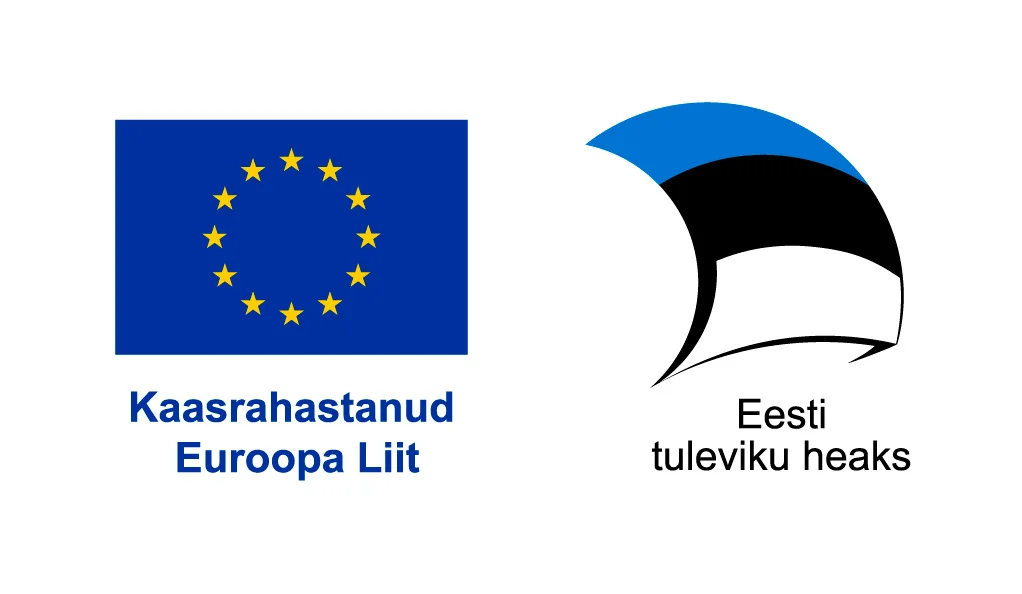Let it be noted that this story tells of many most-most things. In the case of the Saka-Ontika-Toila bank, we can speak of the highest and longest continuous section of the Baltic Klint. On top of that, the most picturesque road in Estonia decorates the limestone wall here.
There is no evidence in the literature to support the latter claim, so it must be blindly believed or verified.
The Sea’s Embrace
The most beautiful part of Saka-Ontika-Toila road, which is about 20 kilometers long, lies between Ontika and Toila. There is a winding road largely in the sea’s embrace. Meanwhile, the relationship between the road and the sea even seems discouragingly intimate. Warning signs installed on the edge of the bank seem fatal. What to do – those who enjoy the views must be warned against excessive bravery at a height of more than 50 meters on the bank’s edge, because there is no fence to close the cliff.
The Tallinn-Narva trade route once passed the same place. There are still border posts in some places today; however, most of the former road has evaded together with fractures. At present, Saka-Ontika-Toila is a side road, properly paved and maintained. Nevertheless, I have noticed that in winter conditions the driving speed is chosen more carefully than elsewhere. And rightly so.
It is especially nice to cycle through the most beautiful section of Estonia. Pedalling allows you to enjoy both breathtaking sea views and the other side of the country: grass-fed beef cattle and sheep, well-groomed fields and country houses.
I can recollect only once when cycling between Toila and Ontika was rather a struggle than a pleasure. It happened in a rapidly developing autumn storm, when it was poring with rain and blowing heavily.
I can always remember the wild mood of the weather at that time whenever I think of how powerful was nature that shaped the North Estonian bank. The Nature Conservation Committee of the Academy of Sciences chose it as the national symbol of Estonia in 1996 on the proposal of the public. The most spectacular part of the Estonian national symbol is located within the borders of Ida-Viru county. It is difficult to contradict the statement of the biologist and journalist Indrek Rohtmets that the limestone bank of Saka-Ontika-Toila is without any doubt our most powerful monument of primitive nature.
The Baltic Klint itself stretches from Sweden from Öland to Lake Ladoga in Russia and which is as much as 1,200 kilometers long. It reaches its highest altitude – 55.6 meters above sea level – at Ontika bank.
It is believed that only Ontika-Valaste shore can be the place where „an eagle threw a man onto a high cliff on Viru beach“. If so, then according to the epic, it is the birthplace of the ancient Estonian state. Thus, a dignified place where to raise the flag on the birthday of the Republic of Estonia. The solemn ceremony is held every year on February 24 at 7.20 am at the place where the highest Valaste waterfall in Estonia blows along the limestone wall.
As many as six of seven highest waterfalls in Estonia are scattered in the cliffs of Ida-Virumaa. If you want to look at the waterfalls from below, you have to take into account that the section of the terrace between Saka manor and Toila has no gaps. So, you can safely and conveniently get down to the sea only by stairs.
Fortunately, stairs have been added or renovated in recent decades. In this way it is possible to land on the ground in Saka, Ontika and Martsa. Apart from the stairs behind the SPA hotel, several roads in Toila lead to the sea. The coolest view of them is the zigzag health trail that descends from near the hotel and is paved with asphalt.
Stunning views
You can also find breathtaking places on the cliffs to the east of Toila. Ida-Viru nature guide Enn Käiss says that while Valaste Waterfall and its surroundings are the most famous and the groups may find it independently, they know nothing about Päite Bank. But if the schedule allows, Enn Käiss offers a trip there himself – the crenulate shoreline of Päite, between Voka and Sillamäe, is his favorite place both as a guide and a photographer.
As a photographer, Enn Käiss has captured wonderful moments there. „When the sun is in the south, there are three traces of angles below – of a shadow – that is like the Egyptian pyramids on the beach,“ he cites.
According to the guide, Päite Bank, which is 41 meters high, is worthy of its watching platform, the construction of which has been planned by Toila Parish. It would be a treat for photographers and nature lovers who are currently risking their lives to pursue stunning views there. Until the hard-to-reach bank opens up in its full beauty from the viewing platform, Enn Käiss does not recommend going to the edge of the bank, as it may be empty at the bottom and thus you risk falling down with the edge.
Päite is also different from other sections of the cliff as you are able to see the bank when walking along the sea shore. This is due to the lack of a forest belt that would obstruct the views. For example, in Valaste or Saka the cliff can be admired in all its effects only if the trees are not in the leaf. Other times, the forest conceals everything.
Welcome to the ’dzungle’!
On the one hand, one might complain of the forest growing and obstructing the view ahead. On the other hand, the dense and lush banking forest is a sight-seeing in itself. Growing on a rubble slope between the limestone shore and the sea in a fresh and shady environment, it may offer both n exceptional species richness and truly lush nature. Broad-leaved trees, a species-rich shrub, sprawling fern and a soft moss rug make you feel like you’re in the Nordic jungle.
The impression of jungle is strengthened by the fact that the bank’s forests are poorly managed and have retained their original appearance. Saka and Valaste hiking trails are great places to get to know the bank forest. In order to make it easier to move around the bank forest, a new boardwalk has been built in Valaste, and more than 20 information boards introduce natural values.
SIRLE SOMMER-KALDA








